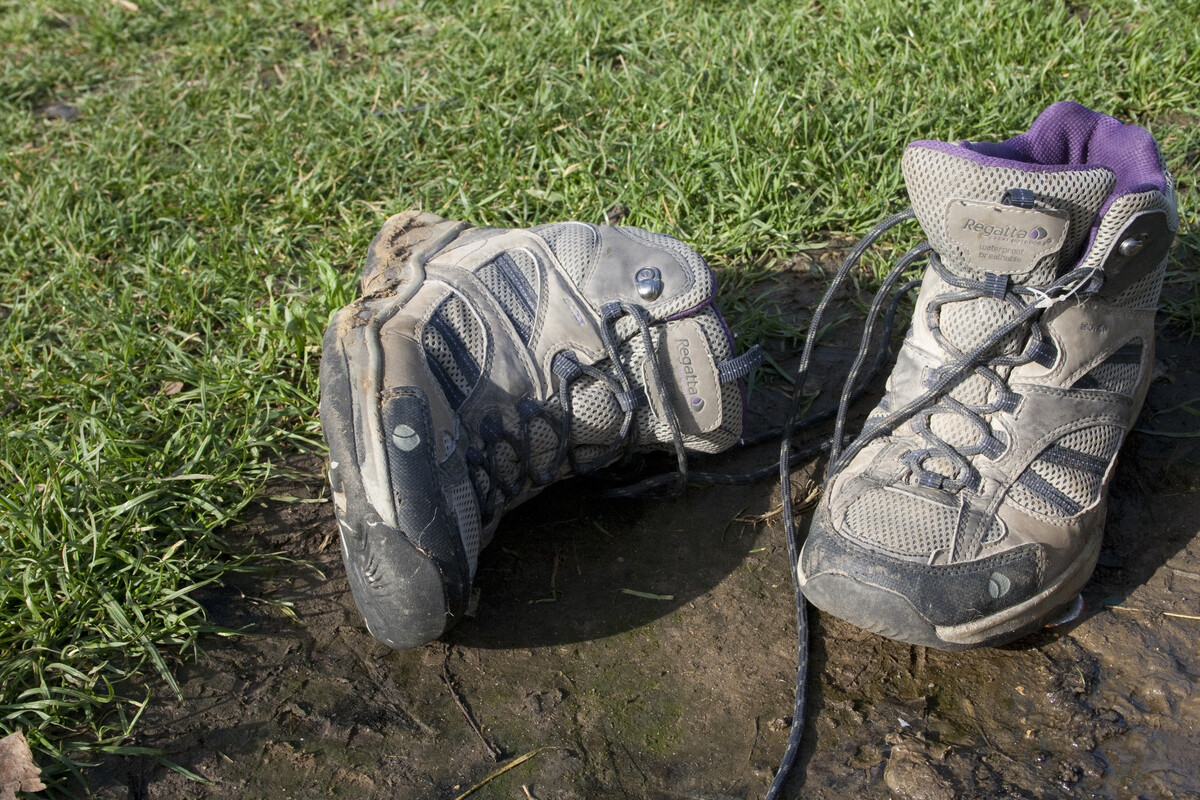
Hiking tips for charity walks
We are here to help you make the most of your hiking adventures. With the right preparation and mindset, everyone can enjoy the beauty of the great outdoors.
So, lace up your boots and get ready to explore with our top tips, gear advice, nutrition guidance, and route-finding suggestions from our partners at England Athletics.
Top 10 hiking training tips

Find the right shoes

Train to time

Have a routine

Set targets

Don't just walk
Nourish your adventure: Snack attack and hydration hacks
Eating well while hiking is key to keeping your energy levels stable and ensuring you have the strength to finish your walk. Here are some nutrition tips to keep you fuelled:
Pre-hike meal
A balanced meal rich in complex carbohydrates, such as porridge or whole-grain toast with peanut butter, will give you a slow-release of energy. Avoid heavy, greasy foods that could make you feel sluggish.
Snacks
Keep your pack light but loaded with nutrition. Dried fruits, nuts, energy bars, and bananas are all excellent choices. They’re easy to carry and provide quick energy when you need it most.
Hydration
Water is your best friend on the trail. Depending on the length of your hike, consider bringing a sports drink with electrolytes, especially on hot days or challenging routes. Avoid sugary drinks—they might give you a quick boost but can lead to an energy crash later.
Gear up and get moving: The right tools for the trail
Having the right equipment can make or break your hiking experience. Here’s what you need:
Footwear:
A sturdy pair of hiking boots or shoes with good grip and ankle support is essential. Make sure they’re well broken in before tackling long hikes to avoid blisters.
Clothing:
Dress in layers to adjust easily to changing weather conditions. A moisture-wicking base layer, insulating middle layer, and waterproof outer layer should cover most conditions.
Backpack:
Choose a lightweight backpack with comfortable straps. It should be large enough to carry water, snacks, a map, and extra clothing, but not so big that it becomes cumbersome.
Safety Gear:
Always carry a map, compass, or GPS device (and know how to use them!). A small first aid kit, a whistle, and a headlamp or torch are also important for safety.
Cross-train to gain: Boost your hiking with other workouts
Activities like cycling, swimming, or running improve your overall cardiovascular fitness, which translates to better stamina and endurance on the trails.
Strength training exercises, particularly for your legs, core, and upper body, build the muscles you need for climbing hills and carrying a backpack. Lunges, squats, and step-ups are excellent for strengthening your legs, while planks and Russian twists bolster core stability.
Cross-training activities such as yoga or balance exercises improve your coordination and stability, helping you navigate uneven terrain more easily.
Strengthening supporting muscles and improving flexibility can help prevent common hiking injuries like sprains or strains. Regularly working on these areas keeps your body in better shape for hiking.
Stretch and recover: Bounce back from your trek
Focus on stretching your major muscle groups, especially your legs and lower back. Gentle stretches for your hamstrings, quads, and calves can help alleviate muscle tightness.
Using a foam roller on sore muscles can help release tension and improve blood flow. Roll slowly over the muscles you’ve worked, focusing on any areas of tightness.
Engage in light cardio, such as a gentle walk or easy cycling, to keep blood flowing and aid in the recovery process.
Replenish lost fluids and nutrients by drinking water and consuming a balanced post-hike meal. Foods rich in protein and carbohydrates, such as a smoothie with fruit and yogurt, support muscle recovery and energy replenishment.
Route to success: Finding your perfect trail
Start with local parks and nature reserves. These areas often have well-marked paths, varying in difficulty, making them great for beginners.
There are many apps and websites, such as AllTrails or OS Maps, that can help you discover new routes. They often include user reviews, difficulty ratings, and detailed maps.
If you’re unsure about navigating trails on your own, consider joining a guided walk. Local walking groups or charities often organise hikes that are open to everyone.
England boasts some incredible National Trails, like the Southwest Coast Path or the Pennine Way. These routes are well-marked and offer stunning views but be sure to pick sections that match your experience level.
Hiking is for everyone, regardless of age or fitness level.
Whether you’re taking your first steps on a local trail or setting out on a day-long adventure, the key is to enjoy the journey. Remember to plan, respect nature, and most importantly, have fun!
So, what are you waiting for?
Get out there, explore the beauty of the English countryside, and discover the joy of hiking. Your mind and body will thank you!
Happy hiking!
Cross-train to gain: Boost your hiking with other workouts
Now you've got the basics sorted you can check out how to stretch, strengthen and fuel for your hike, and find the perfect hiking training plan for you. Why not check out our blog on 'Why you should walk the Jurassic Coast'.


